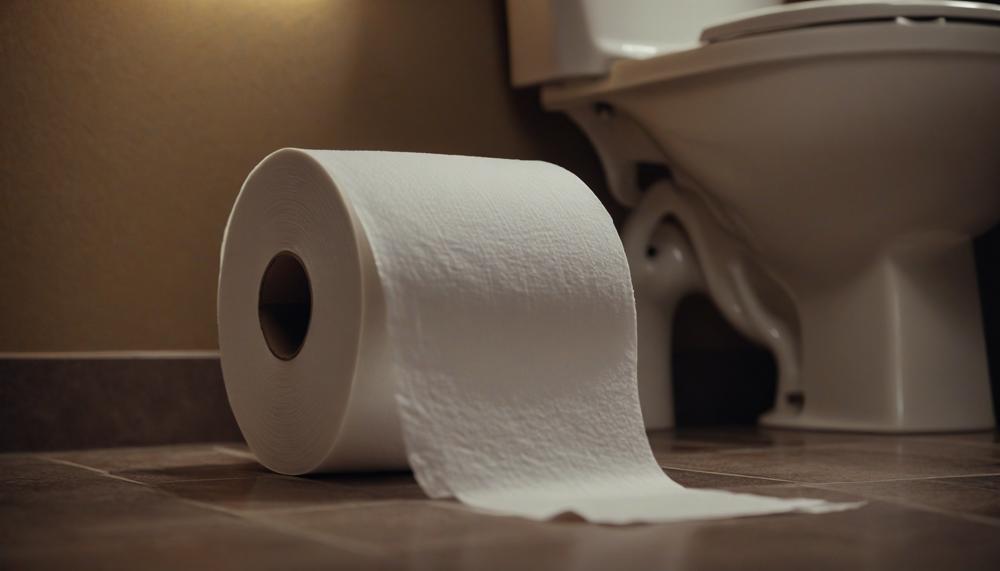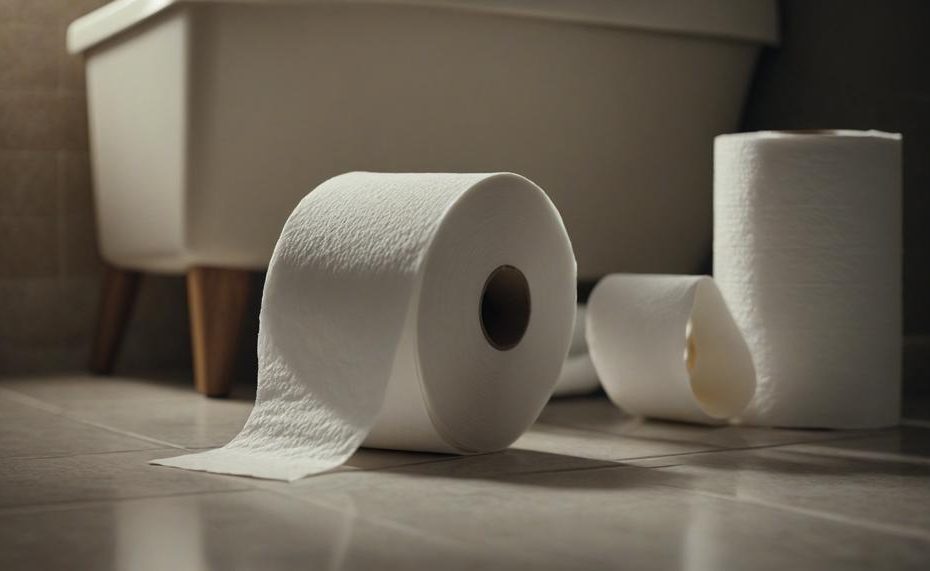Disposing of toilet paper properly might seem straightforward, but it’s essential to consider various factors to ensure it’s done right. Here’s what you need to know:
- Flushing: The most common and convenient method, but check if your plumbing can handle it. Some systems can’t efficiently disintegrate toilet paper, leading to blockages.
- Burying: In natural settings, burying toilet paper with waste can be a viable option. Ensure it’s buried deep enough to prevent animals from digging it up.
- Using Leaves: In emergencies or outdoor settings, using leaves instead of toilet paper can be eco-friendly. Make sure the leaves are safe to use.
- Packing Out: In sensitive areas, you might need to pack out your waste, including toilet paper, to avoid leaving any traces behind.
- Cost and Sanitation: Consider the cost and sanitation of your chosen method. Some methods are more efficient and sanitary than others.
Making an informed choice about how to dispose of toilet paper can significantly impact sanitation and the environment. Let’s dive into these options to ensure you’re always prepared for any situation.
Contents
Why Proper Human Waste Disposal Matters
Proper disposal of toilet paper is crucial for environmental, economic, and public health reasons. Here’s why:
- Environmental Impact:
- Greenhouse Gas Emissions: Disposing of toilet paper in landfills significantly contributes to greenhouse gas emissions as it decomposes anaerobically, releasing methane, a potent greenhouse gas. According to the Environmental Protection Agency (EPA), methane is about 25 times more effective at trapping heat in the atmosphere than carbon dioxide.
- Economic Considerations:
- Sewer System Maintenance: Incorrect disposal methods, such as flushing non-biodegradable or inappropriate toilet paper, can lead to blockages and damage in the sewer system. This results in costly repairs and maintenance. A study by the Water Research Foundation (WRF) shows that such blockages cost municipalities millions annually.
- Sanitary and Health Concerns:
- Preventing Contamination: Flushing toilet paper helps contain and transport waste safely, preventing potential contamination of water supplies and reducing the risk of disease. The World Health Organization (WHO) highlights that improper waste disposal can lead to the spread of waterborne diseases.
- Ecosystem Protection:
- Wildlife Safety: In outdoor settings, improper disposal of toilet paper can harm wildlife and pollute natural habitats. It’s essential to follow guidelines for waste disposal to avoid disrupting ecosystems.
- Waste Management:
- Efficient Breakdown: Properly disposing of toilet paper by flushing ensures it breaks down efficiently in the sewer system, reducing the volume of solid waste that requires treatment. According to the National Association of Clean Water Agencies (NACWA), this process is more efficient and environmentally friendly compared to landfills.
Preparing for Your Hike
Packing the right gear is crucial for a successful and safe hike. Here are some essential items to pack for a hike, and why it is vital to be prepared before hitting the trails:
| Item | Why It’s Important |
| Navigation Tools (map, compass, GPS) | Helps you stay on track and find your way back, especially if you get lost. |
| Headlamp or flashlight | Essential for visibility if your hike extends into the evening or early morning. |
| First Aid Kit | Crucial for treating minor injuries and preventing infections. |
| Extra Water and a filtration system | Staying hydrated is vital for energy and preventing heatstroke or dehydration. |
| Extra Food | Provides energy and keeps your metabolism steady during long hikes. |
| Extra Clothing | Layers help regulate your body temperature and protect against weather changes. |
| Durable Hiking Shoes | Protects your feet and provides stability on rough terrain. |
| Sun Protection (sunscreen, hat, sunglasses) | Prevents sunburn and reduces the risk of heat exhaustion. |
| Emergency Shelter (space blanket, tarp) | Provides protection from the elements if you need to stay overnight unexpectedly. |
| Multi-tool or Knife | Useful for a variety of tasks, from cutting rope to preparing food. |
Being prepared is vital because the wilderness is unpredictable. Weather conditions can change rapidly, trails can be more challenging than anticipated, and accidents can happen. Having the right gear ensures you can handle emergencies, stay comfortable, and enjoy your adventure. Preparedness enhances safety, boosts confidence, and makes the hiking experience more enjoyable.
For more detailed checklists and recommendations, you can visit trusted resources like REI’s Day Hiking Checklist.
Remember, while packing, focus on the essentials to avoid feeling overwhelmed.
Selecting the Right Spot
When selecting the right spot for disposing of toilet paper, consider the following factors to ensure minimal environmental impact and maintain cleanliness:
| Factor | Consideration | Recommendation |
| Avoiding Impact on Other Visitors | Ensure that the disposal site is away from trails, campsites, and water sources to prevent disturbing other visitors and maintain natural beauty. | Choose a secluded area at least 60 meters (200 feet) from trails and campsites. |
| Wildlife Considerations | Improper disposal can attract wildlife, which may dig up toilet paper, leading to litter and potential health hazards. | Bury the toilet paper in a cat hole or pack it out as trash. |
| Contamination Prevention | Leaving toilet paper on the surface can lead to soil and water contamination. | Bury it at least 15-20 centimeters (6-8 inches) deep in a cat hole. |
| Environmental Conditions | In arid or desert landscapes, buried toilet paper does not decompose quickly. | Pack out all toilet paper in desert environments to minimize impact. |
| Local Regulations | Different areas have varying regulations regarding human waste disposal. | Check and follow local guidelines and regulations for toilet paper disposal. |
Digging a Cathole
For the proper disposal of toilet paper, a cathole should be dug between 6 and 8 inches (15-20 cm) deep. This depth ensures that the waste and toilet paper are sufficiently covered, helping to mask it from humans and animals. Moreover, it allows the waste to decompose effectively in rich soils.
| Depth | Benefits | Considerations |
| 6-8 inches |
|
|
Properly Disposing of Toilet Paper and Wipes
Properly disposing of toilet paper and wipes is key to avoiding pipe clogs and environmental harm. Here’s how to do it right:
Toilet Paper Disposal
| Method | Description | Benefits |
| Flush Septic-Safe Toilet Paper | Use toilet paper labeled as “septic-safe” or “flushable,” designed to break down quickly in water. | Prevents clogs and reduces the risk of sewage backups. |
| Use Eco-Friendly Toilet Paper | Choose toilet paper made from sustainable materials that break down easily. | Minimizes environmental impact and promotes sustainability. |
Wipe Disposal
| Method | Description | Benefits |
| Throw Wipes in the Trash | Dispose of all types of wipes (baby, makeup, cleaning) in the trash, not the toilet. Secure them in a plastic bag to contain odors and bacteria. | Prevents clogs in pipes and sewage systems, avoiding costly repairs. |
| Use Biodegradable Wipes | Select biodegradable wipes that break down more easily in the environment. However, always check the label before flushing. | Reduces environmental pollution and supports better waste management. |
Environmental Considerations
Flushing non-flushable items harms aquatic life and pollutes waterways. By opting for eco-friendly products and disposing of waste correctly, you can help protect the environment.
Education and Awareness
According to EPA’s Recycling and Waste Management, educate family members and guests about proper disposal methods. Consider placing signs in bathrooms to remind everyone not to flush wipes and to use septic-safe toilet paper.
Clean Up and Sanitation
Proper disposal of toilet paper is vital to maintaining cleanliness and sanitation in both household and public restrooms. Here are some recommended methods to ensure a hygienic environment:
- Flush Down the Toilet: If you have a modern plumbing system or a septic system capable of handling paper products, flushing toilet paper is the most straightforward method. Ensure your system can break down the paper to avoid clogs and damage.
- Designated Trash Can: In public restrooms or places with older plumbing systems, use a trash can lined with a plastic bag. This should be emptied regularly to prevent unpleasant odors and potential health hazards. Always wrap the used toilet paper properly before discarding.
- Composting: For those who prefer an environmentally friendly option, composting is viable. Only biodegradable and unbleached toilet paper should be composted to avoid soil contamination. This method requires a designated compost pile or bin where the toilet paper can decompose naturally.
- Alternative Products: Consider using flushable wipes or bidets, which can reduce or eliminate the need for toilet paper. Although these options might be more costly, they offer better hygiene and are often more environmentally friendly.
- Hand Hygiene: Regardless of the disposal method, wash your hands thoroughly after handling used toilet paper to prevent the spread of germs and maintain a clean environment.
Alternative Human Waste Disposal Methods

What are some alternative methods for disposing of toilet paper properly, and how do they compare to traditional methods?
- Flushing
- Description: Most common method, toilet paper is flushed away.
- Pros: Convenient, sanitary.
- Cons: May cause plumbing issues if not using proper paper, environmentally taxing.
- Throwing in the Trash
- Description: Used toilet paper is discarded in a trash can.
- Pros: Avoids plumbing issues, immediate disposal.
- Cons: Requires regular trash management, potential for odour and sanitation concerns.
- Washable Cloth Toilet Paper
- Description: Reusable cloths are used, similar to cloth diapers.
- Pros: Environmentally friendly, reduces paper waste.
- Cons: Requires regular washing, higher initial cost, hygiene concerns if not washed properly.
- Composting
- Description: Toilet paper is added to compost bins to decompose naturally.
- Pros: Eco-friendly, reduces waste.
- Cons: Not all toilet paper is compostable, requires proper composting conditions.
- Recyclable and Recycled Materials
- Description: Using toilet paper made from recycled materials.
- Pros: Reduces environmental impact, supports recycling industries.
- Cons: Availability can vary, might be less soft or strong compared to regular toilet paper.
- Flushable Wipes
- Description: Though marketed as flushable, should be avoided in flushing.
- Pros: Convenient, often more effective in cleaning.
- Cons: Can clog pipes, not truly biodegradable, better to discard in trash.
- Bidets
- Description: Using water for cleaning instead of toilet paper.
- Pros: Reduces toilet paper use, more thorough cleaning.
- Cons: Installation costs, requires water supply and maintenance.
Comparison Table
| Method | Pros | Cons |
| Flushing | Convenient, sanitary | Plumbing issues, environmental impact |
| Trash Disposal | Avoids plumbing issues, immediate disposal | Regular trash management, odour and sanitation concerns |
| Washable Cloth | Environmentally friendly, reduces waste | Regular washing, higher cost, hygiene concerns |
| Composting | Eco-friendly, reduces waste | Requires proper composting, not all paper compostable |
| Recyclable/Recycled | Reduces environmental impact, supports recycling | Availability, quality might differ |
| Flushable Wipes | Convenient, effective cleaning | Clog pipes, not truly biodegradable |
| Bidets | Reduces paper use, thorough cleaning | Installation cost, requires maintenance |
Educating Others and Encouraging Responsible Behavior
To educate others and encourage responsible behavior when disposing of toilet paper properly, we need a multifaceted approach that emphasizes the environmental and public health impacts. Here are some effective strategies:
- Provide Information on Environmental Impact
- Highlight the environmental consequences of flushing toilet paper, including potential water pollution and strain on sewage systems.
- Use visuals and infographics to illustrate the journey of flushed toilet paper and its effects on aquatic life.
- Promote Alternative Options
- Encourage the use of bidets or washable cloths, explaining their benefits in reducing waste.
- Provide guides and tutorials on composting toilet paper, emphasizing its eco-friendliness and benefits for soil health.
- Community Engagement
- Organize community clean-up events to raise awareness about proper waste disposal practices.
- Host workshops and seminars in community centers and schools to educate about the importance of responsible waste management.
- Educational Programs
- Implement educational programs in schools that teach children about the environmental impacts of improper waste disposal and the benefits of alternatives.
- Develop interactive activities and games that make learning about waste disposal fun and engaging.
- Public Awareness Campaigns
- Launch public awareness campaigns through social media, local news outlets, and community boards.
- Use testimonials and success stories to inspire others to adopt responsible waste disposal habits.
Table of Strategies for Educating and Encouraging Responsible Behavior
| Strategy | Details | Examples |
| Environmental Impact Information | Highlight the negative effects of improper disposal. | Infographics, videos, articles. |
| Alternative Options Promotion | Encourage the use of eco-friendly alternatives. | Guides on bidets, composting tutorials. |
| Community Engagement | Organize events to raise awareness. | Community clean-ups, workshops. |
| Educational Programs | Implement programs in schools and community centers. | Interactive activities, school projects. |
| Public Awareness Campaigns | Use media to spread the message. | Social media campaigns, local news features. |
By adopting these strategies, we can foster a more environmentally conscious community that understands the importance of proper toilet paper disposal and actively engages in responsible behavior.
Conclusion
Proper toilet paper disposal is vital for maintaining sanitation and minimizing environmental impact. Flushing toilet paper is common, but be sure your plumbing can handle it to avoid costly blockages. In nature, burying toilet paper deep enough to prevent wildlife interference is effective, while packing it out is necessary in sensitive areas.
Using leaves as a substitute in outdoor settings can be eco-friendly, but ensure they are safe. Flushing biodegradable, septic-safe toilet paper is best for plumbing systems, while regular toilet paper should be properly discarded in trash bins if plumbing is inadequate.
Understanding the environmental, economic, and health impacts of improper disposal underscores the importance of responsible practices. Methane emissions from landfills, costly sewer maintenance, and water contamination from improper flushing highlight the need for informed choices.
In sensitive environments, packing out waste or using alternative products like bidets can reduce environmental footprints. Educating others and adopting proper disposal habits can significantly contribute to protecting our ecosystems and promoting public health.





